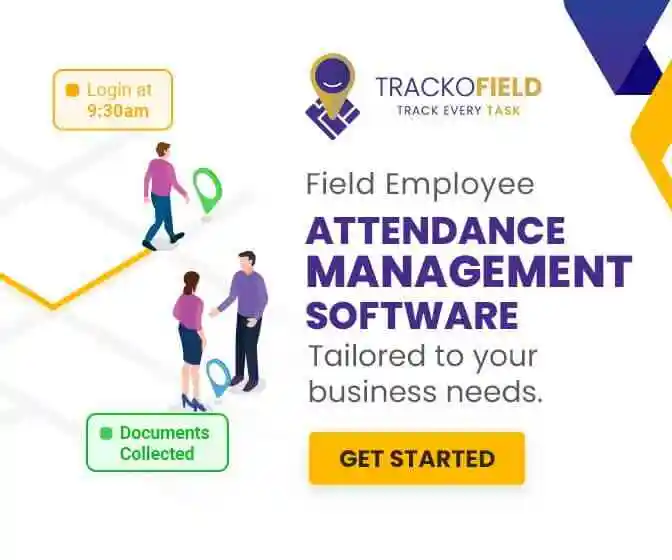-
TrackoBit
Manage commercial vehicles with the new-age Fleet Management Software
TrackoBit -
TrackoField
Streamline your scattered workforce with Field Force Management Software
TrackoField -
Features Resources
-
Blog
Carefully curated articles to update you on industrial trends. -
White Paper
Insightful papers and analysis on essential subject matters. -
Glossary
Explore an alphabetical list of relevant industry terms. -
What’s New
Get TrackoBit & TrackoField monthly updates here. -
Case Study
Explore the cases we solved with our diverse solutions. -
Comparisons
Compare platforms, features, and pricing to find your best fit.
-
About Us
Get to know TrackoBit: our team, ethos, values, and vision. -
Careers
Join the most dynamic cult of coders, creatives and changemakers. -
Tech Support
Learn about our technical support team and services in detail. -
Events
Check out the exhibitions where we left our marks and conquered. -
Contact Us
Connect with us and let us know how we can be of service.
How Smart Visit Planning Helps Scale Agri Input Sales & Achieve Rural Expansion
- Author:Mudit Chhikara
- Read Time:6 min
- Published:
- Last Update: August 4, 2025
Table of Contents
Toggle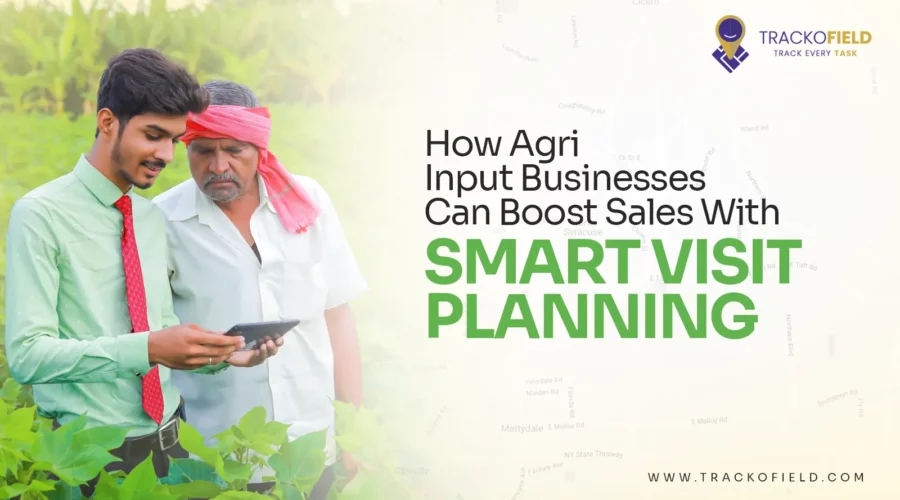
Here’s how Agri input companies can use smart visit planning to boost rural expansion and enhance brand visibility in remote markets.
Table of Contents
ToggleExpansion is the key objective of most businesses and agri-input companies are no different. But in this competitive market, you’ll either have to put significant pressure on your workforce or substantially increase the budget.
However, there’s another way as well!
It’s called smart visit planning. It helps you scale agri input sales and expand your reach to new territories. Data-driven territory mapping and smart route planning using a field force automation for agri-input can also increase client visits and help increase market penetration.
Dive in to learn more about smart visit planning.
What is Smart Visit Planning in Agri Input Sales? How it’s Important?
In simple words, smart visit planning is nothing but strategic scheduling and routing of sales reps. visits using data-driven insights. It ensures that agri field agents always:
- Visit the right locations
- Meet the right people (Individual or group of farmers, retailers, dealers)
- Reach at the right phase (crop cycle, input requirement, demand season)
This drastically improves productivity, reduces wasted travel, and accelerates village-level penetration.
Top 5 Benefits of Smart Visit Planning for Agri Input Businesses
Here is how planning your field sales agents’ visits can benefit agri input companies.
1. Maximized Village-level Territory Coverage
Smart visit planning ensures that your agri field agents spend more time with farmers than mostly travelling. It also reduces time and fuel wasted on unproductive visits or long routes, thus, allowing agents to cover more ground.
💡 Example: This way you can plan visits by region and crop cycle to meet maize farmers before sowing and follow-up during fertilizer top-dressing.
2. Improved Agri Input Sales Efficiency
You can prioritise visits based on the client’s buying history, interest or requirement. This allows you to judge the sales potential and allocate resources accordingly.
Chances of sales increase when farmers have most requirement of agri inputs – harvesting season, seed planting, etc. This is the time when you should maximise your sales operations.
3. Enhanced Farmer/Dealer Experience
Imagine reaching a farmer with pesticides when half his crop has been damaged already? That doesn’t bode well for the company’s credibility, does it?
But thanks to planning visits and travel routes in advance, agents reach farmers without delays and can spend more time with them.
With valuable service and timely addressal of queries, agents eliminate farmers’ doubts and help build loyalty and trust. This is the great way to fix broken farmer onboarding process.
4. Reduced Travel Time and Operational Costs
Intelligent beat planning minimises fuel usage, redundant visits, and travel fatigue. This leads to more productive workdays, higher agent morale, and substantial savings on logistics and adds to your agri input sales KPIs.
5. More Accurate and Timely Data Collection
Planned visits ensure regular and structured collection of market insights, farmer feedback, demand forecasts, and competitors’ activities.
It can help brands make more informed, data-driven decisions. Field agents can also work on the feedback received by farmers to identify any areas of improvement.
What Are the Challenges Agri Input Businesses Face in Rural Expansion?
For agri-input businesses, “scale” doesn’t just mean growth in revenue. It means growing your rural footprint. This involves:
- Reaching more remote villages
- Engaging with more farmers and retailers
- Running more demos and training sessions
- Building deeper distributor networks
But scaling rural operations is no cakewalk. It poses several challenges such as:
- Poor rural connectivity
- Limited data on village-level demand
- Inefficient travel and resource planning
- High cost of adding new field staff
This is where smart visit planning becomes a game-changer. It lets you do more with existing workforce. Let’s learn how!
How To Manage Visit Planning Using Field Force Management Software
1. Smart Territory & Task Allocation
Effective agri sales starts with strategic task planning and sales territory allocation.
Using the software, it’s quick to allocate sales sites & plan tasks for sales reps. It helps ensure that field agents are deployed where they’re needed most without overlaps or missed deadlines. Here’s what you can do with the software’s inbuilt task management module:
- Define the most in-demand sales zones & farmers locations as per crop cycle, harvesting season or seasonal demands.
- Assign task in bulk, categorised as maybe dealer visits, farmer onboarding, troubleshooting, demo or sales pitches, etc.
- Allocate visits based on reps’ experience, workload or regional familiarity.
- Thoroughly explain tasks using voice notes, images and descriptions.
2. Route Distance Calculator and Integrated Map
Field agents spend a large portion of their day traveling between villages and farms. Without beat planning, it can lead to time and fuel wastage. But thanks to the integrated map and route distance calculator, agri input sales teams can optimise their travel and reach more customers in less time.
By analysing route data and travel patterns, managers can assign clustered visits, reduce back-and-forth trips, and ensure reps spend more time interacting with farmers than commuting. Managers can also playback the routes and check reps’ travel history.
Here’s how you can optimise your agents’ daily tasks with beat planning:
- Check for traffic and poor road conditions.
- Calculate the best travel routes for agri sales reps.
- Inform agents in real-time of the road conditions.
- Prioritise routes with geofences amongst multiple client locations.
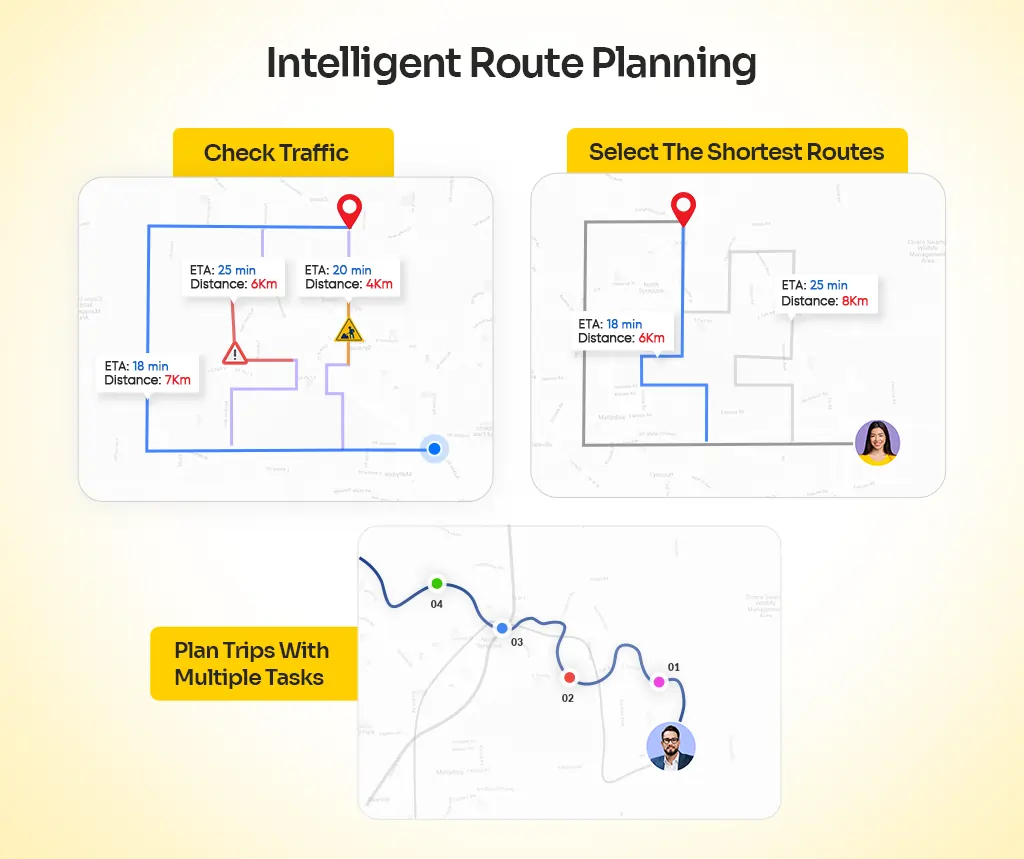
Intelligent Route Planning
3. Real-Time Field Activities Tracking
Scaling sales efforts without visibility into on-ground activities is a recipe for inefficiency.
Real-time field reporting allows managers to track which agents are visiting which areas, what activities are being conducted, and how interactions are progressing. All this in real time!
When your agents know they are being monitored, they work harder and with more accountability. Also, real time tracking helps address on-field challenges instantly, and enables course correction in the middle of tasks, which is especially crucial during short, high-impact agri input sales seasons.
4. Field Data Collection and Analysis
The key to improving visit planning starts with data. There is no point to advance task scheduling and route planning if you aren’t aware of your customers’ needs. There are so many variables like crop types, geography, soil type, weather, etc. that affect agri input sales.
That’s why agri reps have to regularly collect data from farmers and managers have to analyse it. Using field force tracking software, agents can collect data using custom forms. These forms can be shared using QR code or links and farmers add their details themselves.
The data is automatically logged and presented in excel format to mangers, who further analyse it to identify:
- Regional sales patterns
- Product demands
- Farmer complaints and preferences
- Competitor insights
Data analysis also helps to check agents’ productivity using key KPIs. You can tell which executives are underperforming or which areas require more manpower. These metrics help you better plan your visits, select territories and personalise sales strategies.
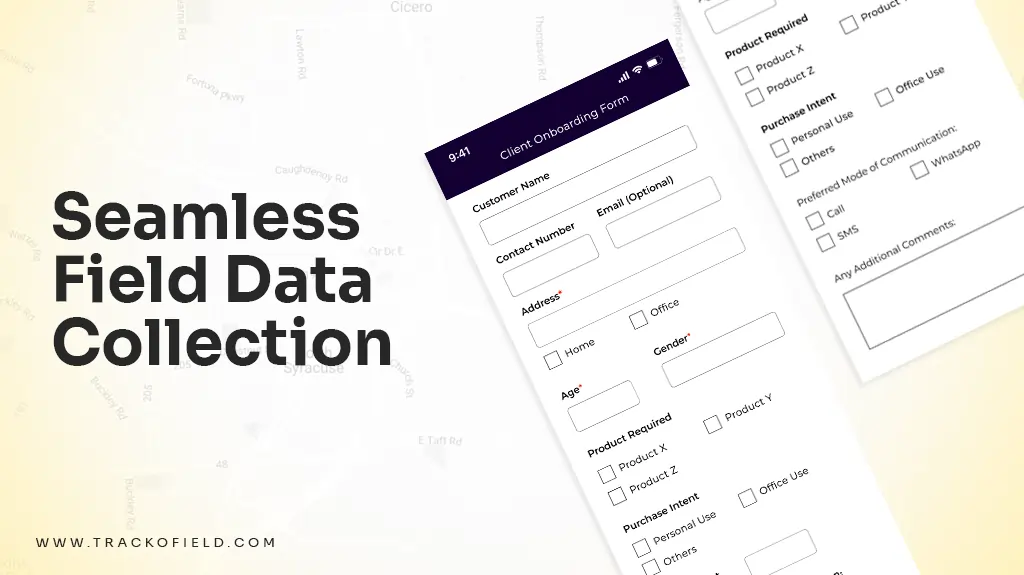
Seamlessly Collect On-Field Data
Wrapping Up
Intelligent visit planning can be a gamechanger for your agri input business. It allows agents to cover more areas in less time, leading to fast territory expansion and increased agri input sales.
Smart visit planning also improves customer service, reduces employee burnouts and enhances company’s market reputation.
The best thing? You can achieve this without drastically increasing your team size or putting undue pressure on them.
However, you need an effective field force management solution like TrackoField to help with route planning, location-enabled task & visits scheduling and more. Book a free demo of TrackoField to learn more.
FAQs
-
Why is visit planning important for agri-input companies?
Intelligent visit planning is important for agri-input companies because it: -Ensures timely farmer engagement -Maximizes territory coverage -Reduces field agents’ travel time -Boosts farmer engagement and sales
-
How does smart visit planning help increase sales revenue?
Smart farmer visit scheduling prioritizes high value visits, reduces time wastage and improves follow-ups. It also helps agents spend more time with customers and deliver more personalised service through profile analysis. All these drives agri input sales and thus, revenue.
-
What challenges do agri-input companies face in rural expansion?
Agri input businesses face many challenges while expanding into more territories, especially rural ones. This includes remote locations, patchy network, limited manpower, diverse regional needs, rigid customs, and heavy reliance on local dealers.
-
How do you track sales visits in remote locations?
The best way to track agri input sales visits in remote locations is through using a field force automation tool. It allows you to track your agri field teams even without internet. It uses GPS and geofencing to log visits, sync data later and record attendance and task status.
Mudit is a seasoned content specialist working for TrackoField. He is an expert in crafting technical, high-impact content for Field force manage... Read More
Related Blogs
-
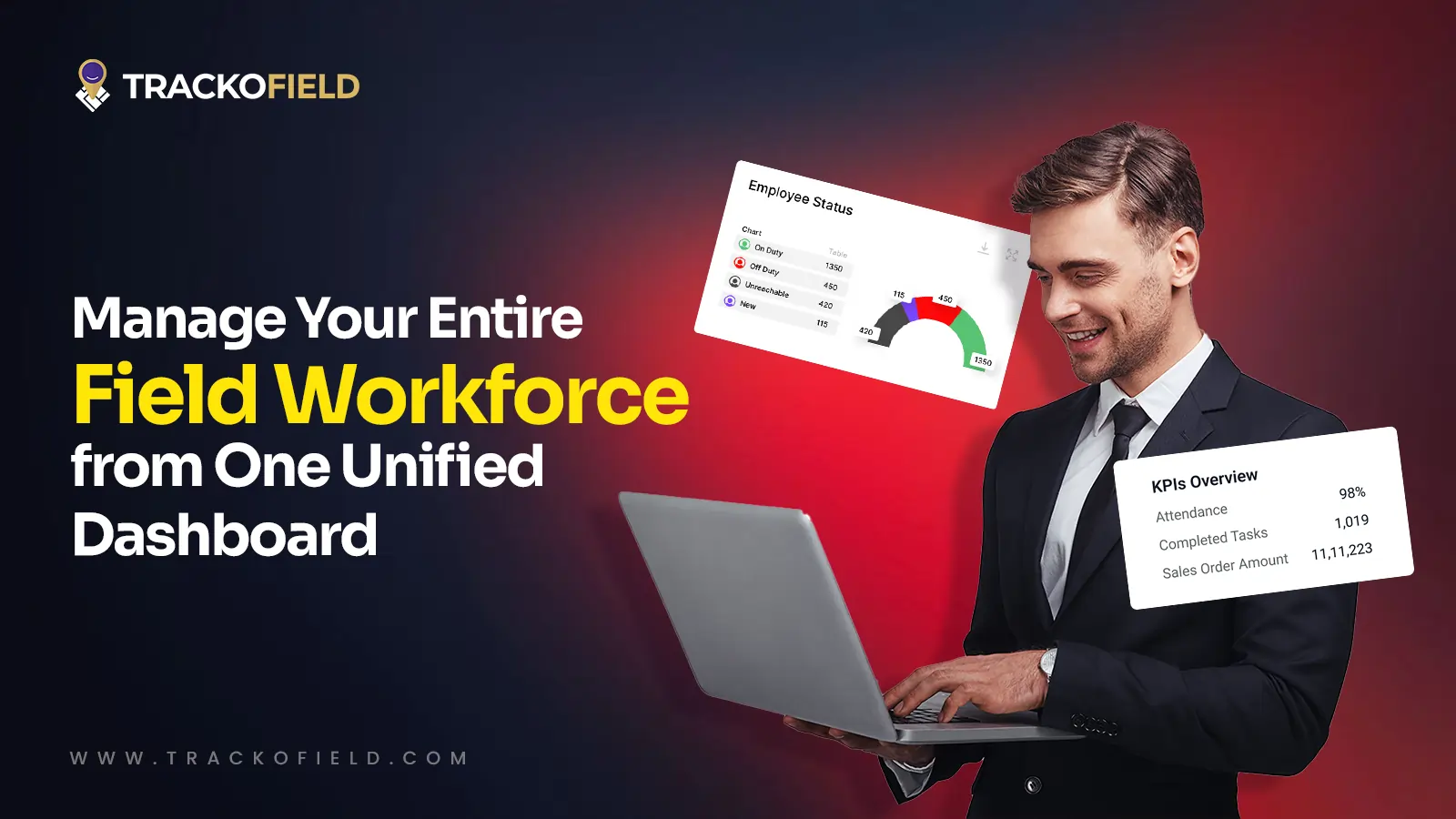
Unified Field Workforce Dashboard: Monitor Tasks, Attendance & More In One Place
Mudit Chhikara December 15, 2025Bring full clarity to field operations with a single, real-time field workforce dashboard.
-

Loan Disbursement in NBFCs: From 15 Days to 3 Minutes – Learn How
Shemanti Ghosh December 11, 2025TrackoField’s AI-enabled field force automation software speeds up loan disbursals in NBFC with field agent task monitoring and facial attendance…
-

AI Facial Recognition Attendance: A Game-Changer for Fraud-Free Field Operations
Mudit Chhikara December 9, 2025Ensure transparent attendance and eliminate fraud before it even starts with AI facial recognition and geofencing.
-
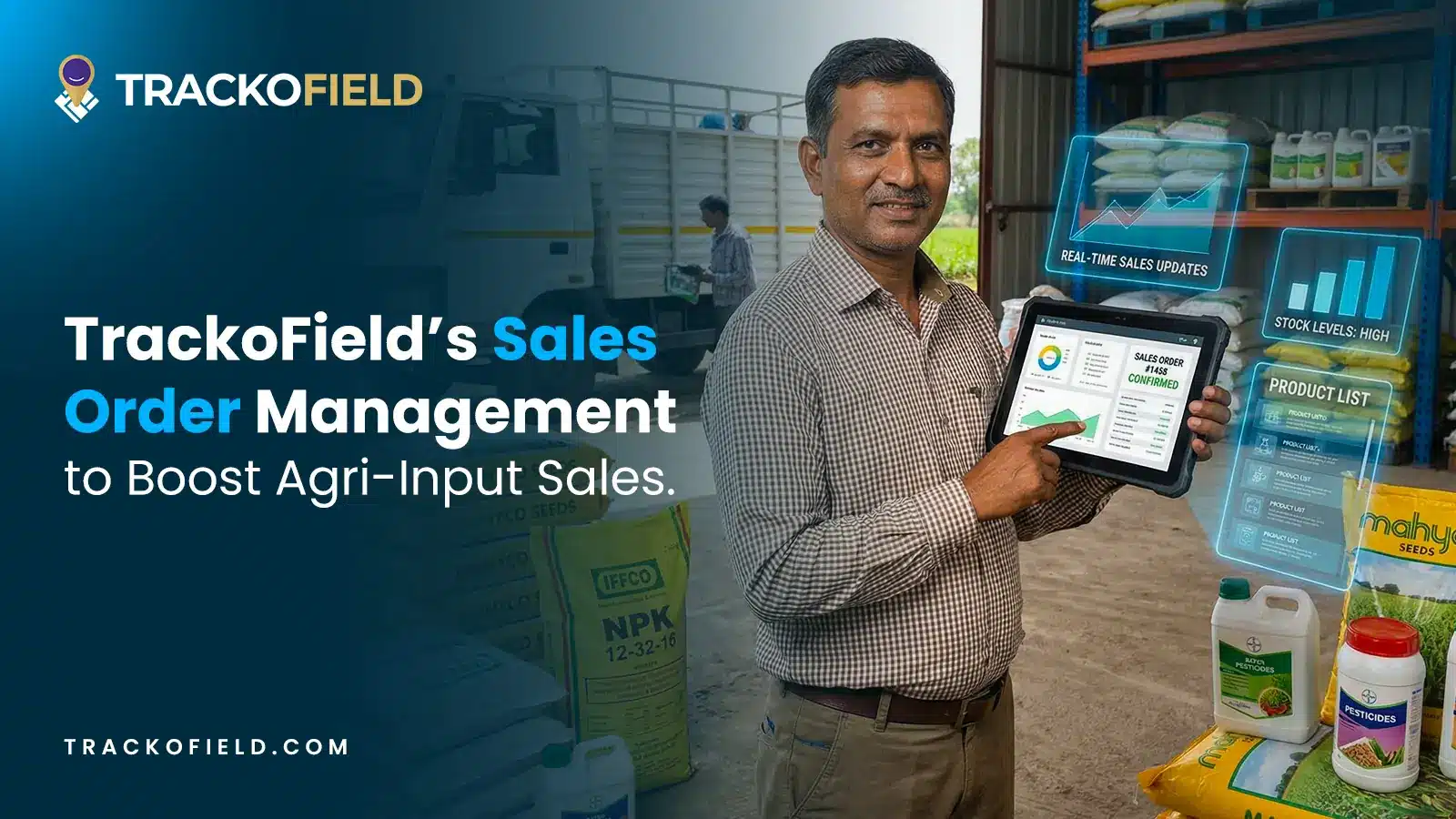
Boost Agri-Input Sales Efficiency with TrackoField’s Sales Order Management Module
Shemanti Ghosh December 3, 2025Grow Agri-input sales and expand farmer database with TrackoField’s Sales Order Management module.

Subscribe for weekly strategies to boost field team productivity.
Your inbox awaits a welcome email. Stay tuned for the latest blog updates & expert insights.
"While you're here, dive into some more reads or grab quick bites from our social platforms!"Stay Updated on tech, telematics and mobility. Don't miss out on the latest in the industry.
We use cookies to enhance and personalize your browsing experience. By continuing to use our website, you agree to our Privacy Policy.


































